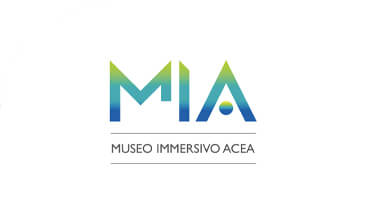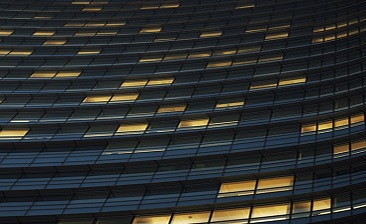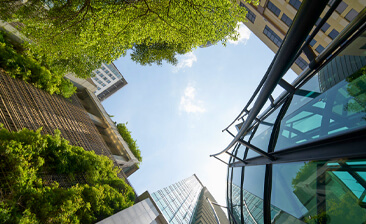
Acea for World Energy Saving Day
The Papal Basilica of Santa Maria Maggiore in Rome is one of the four papal basilicas in the capital, along with St. John Lateran, St. Peter’s Basilica in the Vatican City and of St. Paul Outside the Walls, and stands in the square of the same name, on the Esquiline Hill. Its foundation, in the 4th century, makes it an authentic jewel of early Christian art.
The construction of the Basilica of Santa Maria Maggiore is due to the will of Pope Liberius and a couple of Roman patricians who, according to tradition, decided to dedicate the construction of a church to the Virgin Mary who appeared to them in a dream on an August night in 352 AD. The Pope also had the same dream, in which Our Lady indicated the place where the church should have stood: the Esquiline. The next day, on August 5, going to the hill, the Pope discovered it snowy and, struck by the miracle, decided to trace the perimeter of the new basilica on the snow.
The Papal Basilica of Santa Maria Maggiore is the only one to have preserved the early Christian structure, albeit enriched by later additions that make it a mixture of architectures from different eras. Examples are the Ionic columns, the early Christian sanctuary, the Romanesque bell tower, the highest in Rome, the Renaissance ceilings, the Baroque domes and the mosaics dating back to the era of the Low Roman Empire. The last interventions date back to the late 1700s, when Pope Benedict XIV built a new facade with a large porch and a loggia for blessings.
The Papal Basilica has three naves, divided by two colonnades, consisting of columns with Ionic capitals that rhythmically mark the visual path to the altar, the ideal destination for the cathartic path of the faithful. The church is functional for large meetings thanks to the large space of the central nave, illuminated by a clear light that strikes the surfaces embellished by the mosaics.
The Papal Basilica of Santa Maria Maggiore, characterized by a Latin cross plan, with a central nave and two side aisles, was considerably transformed between the 16th and 17th centuries by Popes Sixtus V and Paul V who built the two large side chapels and the building to the right of the facade.
The Pauline Chapel was commissioned by Pope Paul V who made it a family chapel with the Greek cross structure. Bound to the plant by the mirrored Sistine Chapel, the Pauline, completed in 1616, preserves the most important Marian icon: the Salus Populi Romani which portrays the Madonna and Child and was painted according to tradition by Saint Luke the Evangelist, patron saint of artists. The structure is decorated with precious colored marbles and on the side walls, in a triumphal arch architecture, are the statues of Popes Clement VIII and Paul V.
The mosaics in the nave of the Papal Basilica of Santa Maria Maggiore, dating back to 430 AD, represent the oldest early Christian mosaic cycle in Rome.
The work, initially composed of 42 panels dedicated to the stories of the Old Testament, has been partially destroyed over the years. The remaining 27 squares were completed with repaints where the mosaic was lost. Subsequent restorations were carried out in 1600, on the occasion of the Holy Year, by the will of Cardinal Domenico Pinelli.
Several mosaics decorate the Papal Basilica of Santa Maria Maggiore, both inside and outside. In particular, the facade features a mosaic created by Filippo Rusuti in the 13th century, under the pontificate of Nicholas IV.
Divided into two registers, the upper one depicts the blessing Christ with four angels on the sides, the lower one represents four boxes that narrate the miracle that is at the origin of the foundation of the Basilica.
Between the end of the 13th century and the beginning of the 14th, the artist Jacopo Torriti intervened in the decoration of the Basilica, in particular in the creation of the apse mosaic, depicting the Coronation of the Virgin in the apse basin and the scenes from the life of Mary in the strip below.
The intervention on the Papal Basilica of Santa Maria Maggiore involved the replacement of 90 projectors of the 130 installed, for the lighting of the facade, the bell tower and the Sistine and Pauline domes. The lighting of the mosaic loggia and the lower porch has also been restored. In addition, for the first time, the bronze statue of the Virgin with child placed on top of the Column of Peace, the Corinthian column located on the square in front of the facade of the Basilica, was illuminated.
Over the centuries, important figures have been buried in the Papal Basilica of Santa Maria Maggiore. In addition to the remains of the five popes, Pius V, Sixtus V, Clement VIII and IX and Paul V, the Basilica houses one of the main artists of Baroque art, Gian Lorenzo Bernini, in the family tomb. Although almost all the tombs of the popes are inside the caves of St. Peter's Basilica, Pope Francis chose to be buried right in Santa Maria Maggiore.
Discover the latest news and initiatives of the Acea Group

Acea for World Energy Saving Day

Visit the virtual museum about the history of the Acea Group

The channel for the commercial requests on land urbanisation

Acea turns the spotlight on the Rome Film Festival 2023

Acea is in the "Gold class" in the .trust research

Read more about our culture of inclusiveness